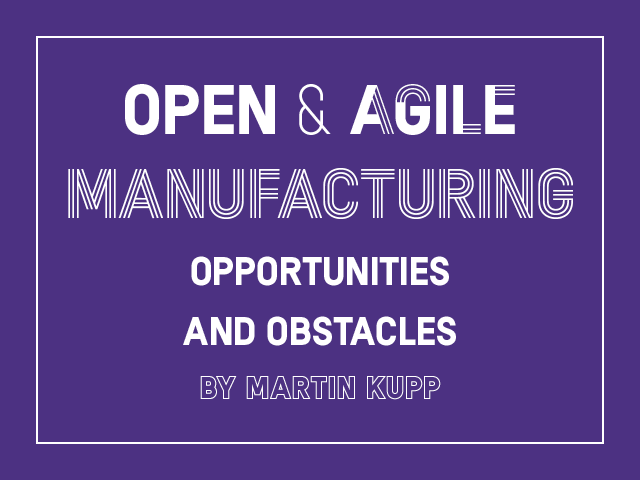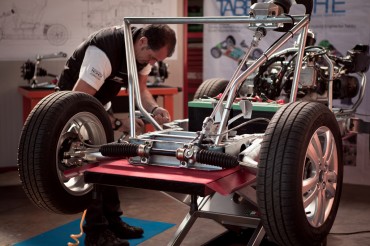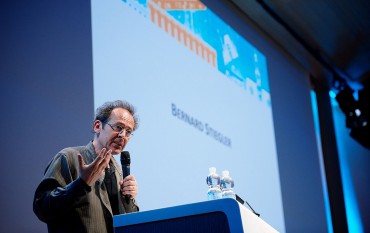In this article published in Open Models, les business models de l’économie ouverte, Martin Kupp addresses a typical question when talking about open manufacturing for big corps : can the elephant dance ?
When talking to executives from manufacturing companies, especially large industrial goods companies like Siemens, Bosch, or Schneider Electric, they seem to have one common question : how can we gain speed, become more agile in a fast changing environment and, last but not least, become more open for new developments, both in technology and customer needs ?
It is important to understand the drivers of this development. For the last five years since I have been working closely with companies on the challenges of becoming more agile and open, I have heard mainly three reasons why these topics have become so important. First of all, many large companies that have built excellence in producing large volumes up to detailed specifications observe that requirement changes during the product development process are becoming more and more common.
With last minute requirement changes it becomes more difficult to secure enough lead time for manufacturing.
The german automotive supplier Bosch, for example, is experiencing this in China where not only the lead-time is dramatically shorter than in Europe or the United States, but Chinese car manufacturers are also frequently changing their requirements shortly before the start of production. This is also supported by research and has of course tremendous impact on the manufacturing process. With last minute requirement changes it becomes more difficult to secure enough lead time for manufacturing.
A second trend is smaller order sizes. With a lot more product variations being introduced in a short time, order sizes shrink and the manufacturing process has to be more agile to react. The so-called “long-tail” effect is one example for this. The german company Dräxlmaier is an extreme case. They are producing customer-specific wiring harnesses for the automotive industry. Customer-specific means that there are no two cars produced on the same day or even week with exactly the same wiring harnesses. Each wiring harness is produced to the specifications of the end-user !
With traditionally faster development cycles for software, companies have to come up with ways to adjust the hardware development cycles accordingly.
Last but not least, we observe that the distinction between hardware and software is becoming obsolete with more and more software being integrated in hardware. Nest, the company that builds thermostats and smoke alarms and was bought in January 2014 by Google for a mere 3,2 billion US dollar, is on the one hand a hardware company building home appliances but at the core is a software company allowing the seamless integration of these devices with the internet of things and services. With traditionally faster development cycles for software, companies have to come up with ways to adjust the hardware development cycles accordingly.
This raises an interesting question : is manufacturing going full cycle? Are we going back to what manufacturing was at the beginning ? What I mean by this is that, when we look into the history of manufacturing, the beginnings were what we would call today agile and often also open. Order sizes were typically rather small, customization common, partnerships with suppliers and customers normal. It was only during the industrialization and especially with the invention of the assembly line and the popularity of Henry Ford, that we saw large scale manufacturing and finally mass manufacturing.
Agility and openness cannot be forced on people.
There are, of course, some technical answers to the above mentioned challenges. Companies have developed technologies like the standard for the exchange of products (STEP), concurrent engineering, virtual manufacturing, lean manufacturing, object oriented architecture of products, agile product development and also found new ways of working together like scrum. Apart from these more technical solutions I would like to share three success factors that I have seen in companies tackling successfully agility and openness:
- People over process
For good reasons, the mantra people over process is also the first value of the agile manifesto, developed in 2001 by a group of software developers. Companies have to think about new ways of making work stimulating and self determined. Agility and openness cannot be forced on people.
- Involving supplier and customer and community management
I truly believe that companies should start with their suppliers and customers when opening more up. They are not only the closest to the company but also the most crucial for success. This is a big difference to software companies where suppliers are often not as important. Key to successfully managing suppliers and customers is to start giving before asking (proactive attention) and to be very responsive once you do get feedback (reactive attention).
- Good quality data
Last but not least, the quality of the data that companies collect and analyze during this process will determine their ability to react quickly and effectively to changing markets and technologies, smaller order sizes, and an ever faster innovation cycle often driven by software developments.




